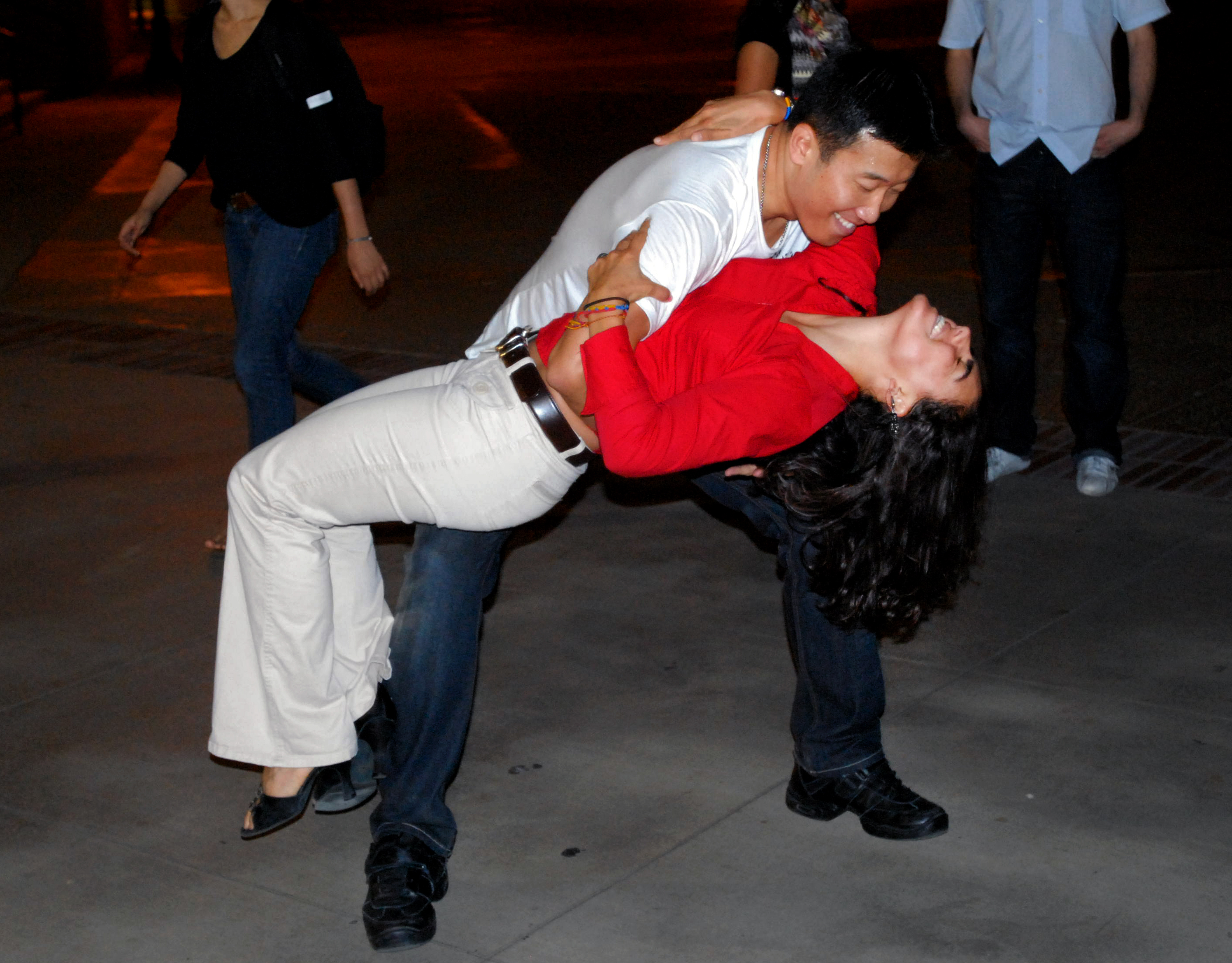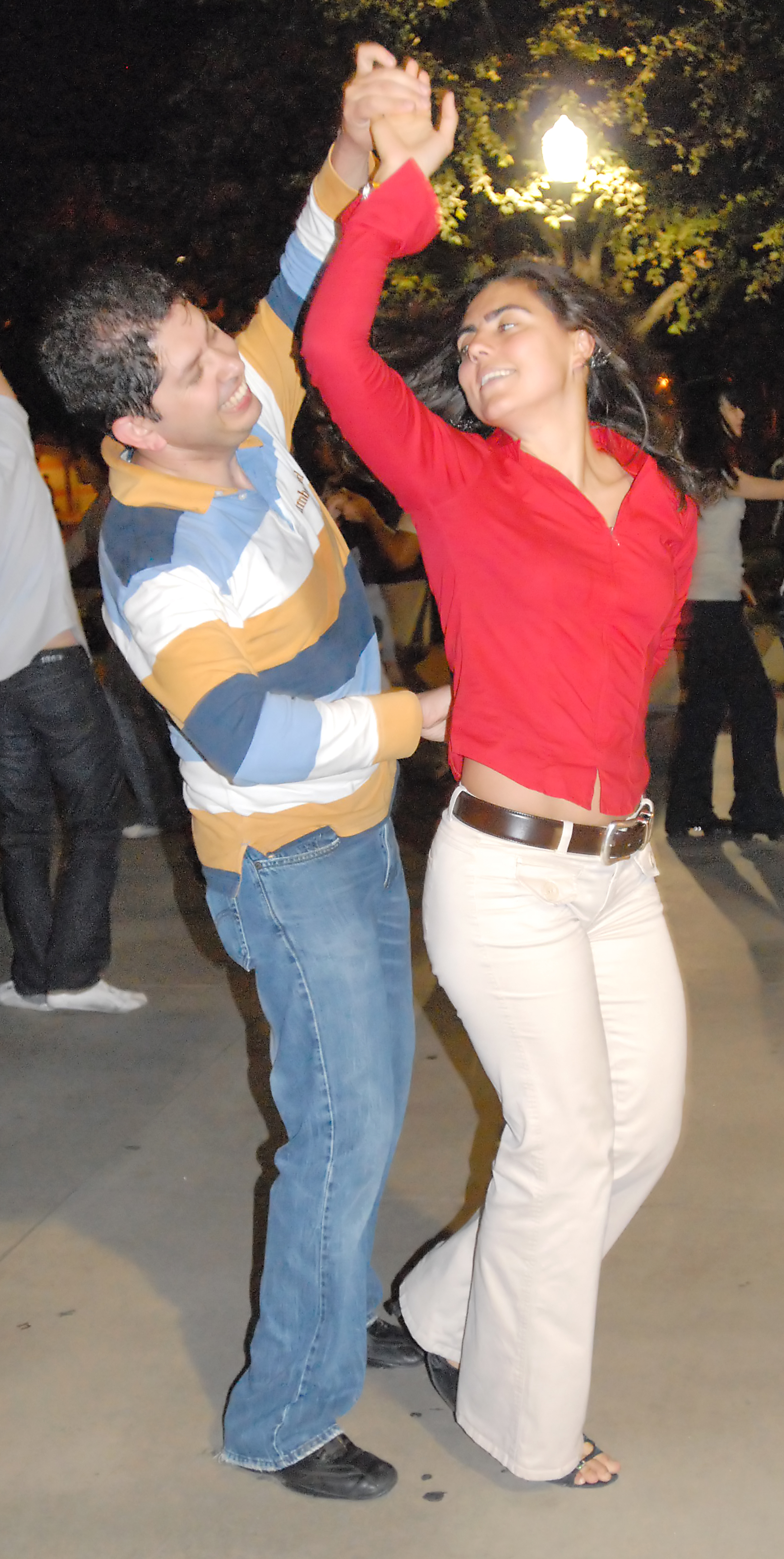
UCLA alumnus Feng Gao dips Laura Saldarriaga, a fifth-year graduate chemistry student, during a Thursday meeting of the Salsa Society as spectators watch.
Salsa is a dance of speed and intensity ““ the two dancers’ arms tangle in a twist of turns, hips moving to the beat of the music. Two bodies move in sync, each person reciprocating the other’s steps with stylized, sensual movement.
The dance can be traced back to Afro-Cuban rhythms like rumba, mambo, cha cha cha and the Cuban son, which is a combination of African drumming, vocals and dancing and Spanish forms and melodies.
“In the ’60s, Cubans and Puerto Ricans migrating to New York City developed their own movement using Afro-Cuban rhythms,” said ethnomusicology professor Steve Loza.
“People started mixing. As race mixes, cultures mix. That’s what happened to music.”
This musical combination can be seen and heard in Bruin Plaza every Thursday. People walking by can sneak a glance at the girls dancing in high stilettos and the guys leading them with controlled precision.
Salsa Society, the group that practices by the Bruin statue, is five years old, and is still defining itself as an organization.
Salsa Society does not officially require participants to sign up for the group.
It provides a place for would-be salseros to dance, get some exercise and meet new people.
“It allows you to create something with someone else. I like that it’s improvisational ““ none of it is rehearsed. Every time you do it, it’s different,” said Jeff Hicks, a second-year materials science and mathematics student and a member of Salsa Society.
According to Melissa Hough, a third-year sociology student and a new Salsa Society member, they were intimidated about approaching the dancers, but they found Salsa Society welcoming and willing to teach newcomers.
Beginners’ lessons are given every Thursday at 5:30 p.m.
“I encourage people not to be afraid. If they want to learn, they should come talk to us,” Hough said.
After lessons have finished, the floor opens for social dancing, during which beginners can continue to practice or experienced dancers can come to de-stress and mingle.
“The thing I like about (Salsa Society) is that you get undergraduates, graduate students and even professors,” Hough said.
Misho Galbo, a fourth-year aerospace engineering student, is this year’s Salsa Society president. His duties include organizing the lessons and the music for Thursdays, as well as choreographing and running the performance team.
The performance team is composed of couples who attend several congresses a year, where they participate in workshops as well as social dancing.
However, most club members do not dance salsa competitively, but rather as a pastime. Salsa is largely a hobby for the members of the group, a skill they can take on with them into the future.
“Even if you do take it professionally, you still have to get a job. It’s more of a nightlife thing,” Galbo said.
Salsa Society members also occasionally go to salsa clubs in Los Angeles together, where there are new trends emerging that are redefining the traditional way of dancing salsa, in which the man leads and the woman follows.
“At clubs, you’ll see guys following guys, or girls are taking the lead and dancing with other girls. … (Or) girls (are) leading with guys following,” Hough said.
No matter how much the conventions of salsa change, Salsa Society members keep up with the music and the liveliness that surrounds the dance.
“People dance salsa because they crave it. Even if I’m in a horrible mood, once I start dancing and feel the beat, nothing else matters,” Hough said.
